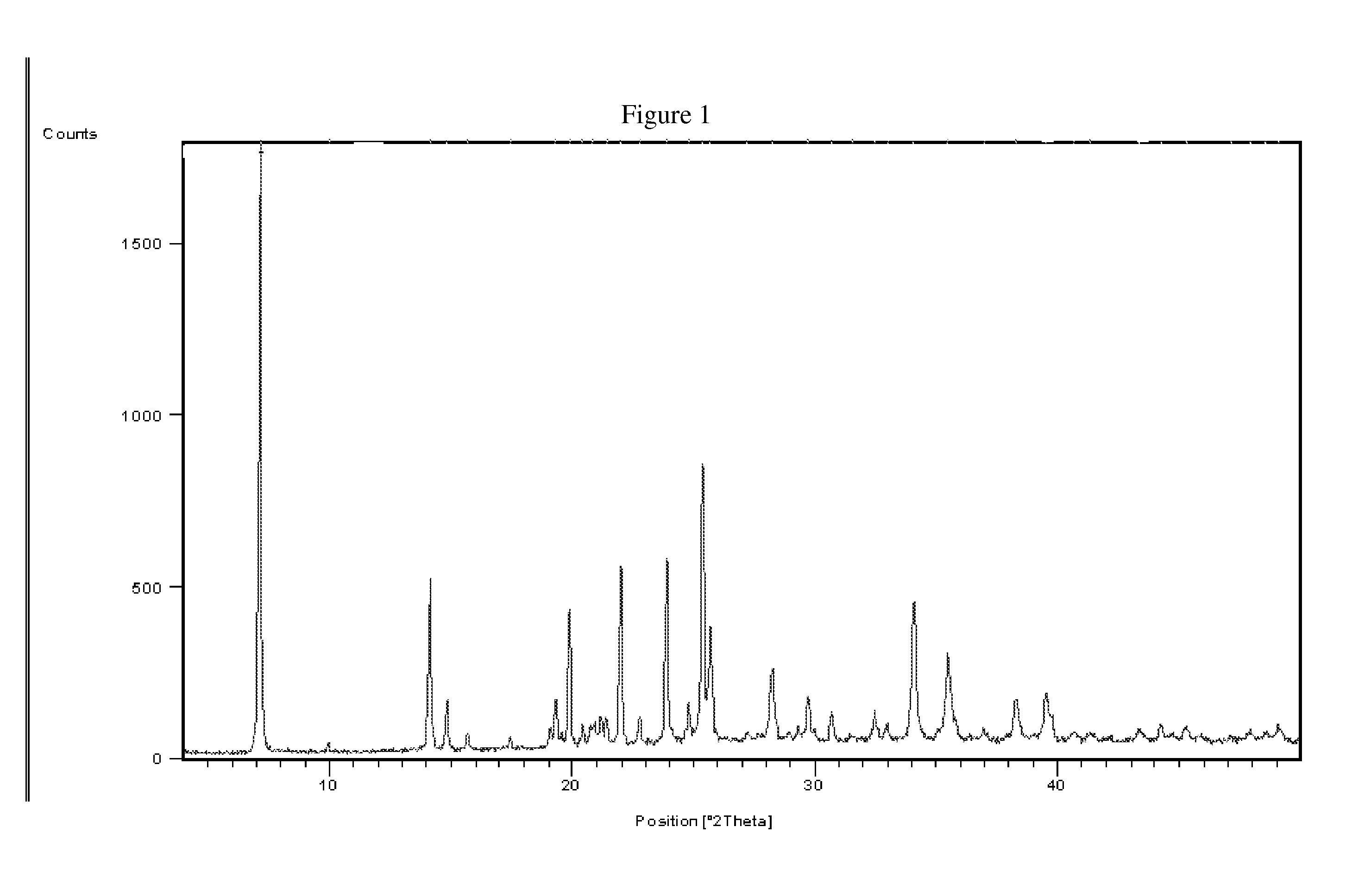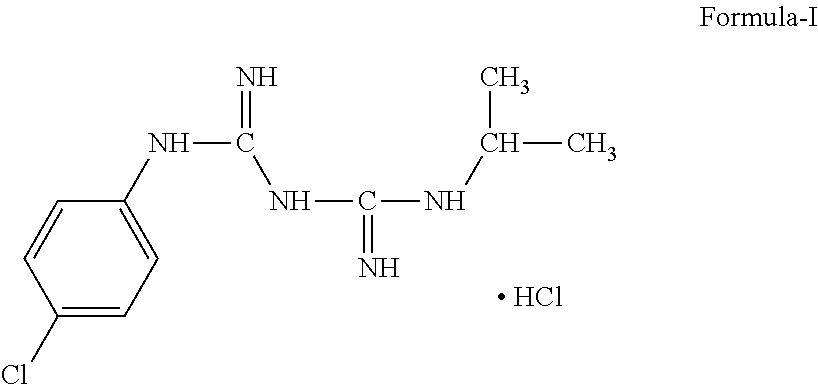Process of Preparation of Proguanil
a technology of proguanil and sulfide, which is applied in the field of preparation process of proguanil, can solve the problems of inequitable economic inconvenient filtration and workup of copper sulfide after the completion of the reaction, and insufficient environmental protection and industrial feasibility of the process, so as to achieve high purity and yield
- Summary
- Abstract
- Description
- Claims
- Application Information
AI Technical Summary
Benefits of technology
Problems solved by technology
Method used
Image
Examples
example 2
Preparation of Proguanil Hydrochloride
[0083]200 g (1.02 mole) p-chlorophenyl cyanoguanidine was stirred in 1200 ml tetrahydrofuran (THF) and 1000 ml water at 25-35° C. 170 g (0.68 mole) copper sulfate pentahydrate and 360 ml (4.14 mole) isopropylamine was added to this stirred solution. The reaction mixture was heated to reflux for 3 hours. TLC was checked for the absence of p-chlorophenyl cyanoguanidine. 800 ml water was added to the refluxed reaction mixture and THF was distilled out at 70-75° C. Then reaction mass was cooled to temperature 25-30° C. Aqueous HCl solution [500 ml conc. HCl in 800 ml water] was added to cooled reaction mixture and stirred for 30 minutes. Cooled ammoniacal EDTA solution [800 ml water, 360 ml aqueous ammonia (25%) and 352 g EDTA disodium salt] was added dropwise to the above reaction mixture maintaining the temperature 15-20° C. After complete addition the reaction mass was stirred at same temperature for 30 min and separated product was filtered, was...
example 3
Purification of Proguanil Hydrochloride
[0085]235 g Proguanil hydrochloride obtained in example 2 was dissolved in 6.6 litre purified water at temperature 85-95° C. 12 g activated charcoal was added to it and stirred for 15 min. The hot mass was filtered over hyflobed and filtrate was stirred at 10-15° C. for 1 hour. The crystallized product was filtered and dried at 90-95° C. The solid material (152 g) obtained was dissolved in 760 ml methanol at 60-65° C. The solution was filtered and 3.8 litre ethyl acetate was added to the filtrate followed by stirring and cooling at 10-15° C. The crystallized product was filtered, washed with 150 ml cold ethyl acetate and dried at 70-75° C. 125 g pure Proguanil hydrochloride was obtained. [Purity: 99.9% by HPLC]
Example: 4
Preparation of Proguanil Hydrochloride
[0086]200 g (1.02 mole) p-chlorophenyl cyanoguanidine was stirred in 1200 ml THF and 1000 ml water at 25-35° C. 170 g (0.68 mole) copper sulfate pentahydrate and 360 ml (4.14 mole) isopropyl...
example 6
Preparation of Proguanil Hydrochloride
[0089]10 g (0.05 mole) p-chlorophenyl cyanoguanidine was stirred in 100 ml methanol and 50 ml water at 25-35° C. 6.5 g (0.03 mole) copper sulfate pentahydrate was added to this stirring solution. 15 ml (0.15 mole) isopropylamine was added to this stirring solution. The reaction mixture was refluxed for 3 hours. TLC was checked to confirm the absence of p-chlorophenyl cyanoguanidine. 40 ml water was added to the refluxed reaction mixture and methanol was distilled out at temperature 70-75° C. Then the reaction mass was cooled to 25-30° C. Aqueous HCl solution [25 ml conc. HCl in 80 ml water] was added to reaction mixture at 25-30° C., stirred for 30 minutes and sodium sulfide solution [4 g sodium sulfide dissolved in 16 ml water], cooled to temperature 25-30° C., was added dropwise to above reaction mixture. After complete addition, the reaction mass was stirred at same temperature for 30 min and the separated copper sulfide was filtered. Filtrat...
PUM
| Property | Measurement | Unit |
|---|---|---|
| Temperature | aaaaa | aaaaa |
| Temperature | aaaaa | aaaaa |
| Temperature | aaaaa | aaaaa |
Abstract
Description
Claims
Application Information
 Login to View More
Login to View More - R&D
- Intellectual Property
- Life Sciences
- Materials
- Tech Scout
- Unparalleled Data Quality
- Higher Quality Content
- 60% Fewer Hallucinations
Browse by: Latest US Patents, China's latest patents, Technical Efficacy Thesaurus, Application Domain, Technology Topic, Popular Technical Reports.
© 2025 PatSnap. All rights reserved.Legal|Privacy policy|Modern Slavery Act Transparency Statement|Sitemap|About US| Contact US: help@patsnap.com



